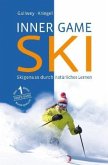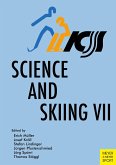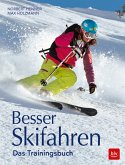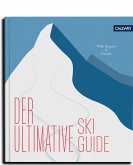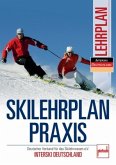"A fascinating look inside the complexities and enjoyment of skiing. For every skier, from the beginner to the Olympic Gold Medalist, this book provides a treasure of information." -PAUL MAJOR, ATHLETIC DIRECTOR, U.S. SKI TEAM "I was delighted to learn from this interesting book more about the physics of a sport I have enjoyed for more than seventy years." -NORMAN RAMSEY, NOBEL LAUREATE IN PHYSICS, HARVARD UNIVERSITY
Just over ten years ago when the first drafts of this book were being written, and even more so a few years after that as it was making its way through the publication process, alpine skiing was experiencing what eventually became a complete revolution in equipment and tech nique: "shaped" or "parabolic" skis completely took over the market, and even relatively beginning skiers expected to carve graceful turns as they schussed down the slopes. Re-reading our work with an eye to revision, we have been surprised to see how our focus on the physics of skiing in the first edition al lowed us to recognize the fundamental importance of what were then quite novel changes in equipment and technique. The essence of the enhancement offered by shaped skis is their greater sidecut radius. Our original discussion (then and now in Chapters 3 and 4) of the crucial role that a ski's sidecut plays in carving a turn caused us to write, for the most part, as if the shaped ski had always been in existence. Sim ilarly, our interest in the geometry ofthe sidecut allowed us to discuss snowboards in some detail as well, for the key to their ability to "shred" down the mountain is their deep sidecut.
Hinweis: Dieser Artikel kann nur an eine deutsche Lieferadresse ausgeliefert werden.
Just over ten years ago when the first drafts of this book were being written, and even more so a few years after that as it was making its way through the publication process, alpine skiing was experiencing what eventually became a complete revolution in equipment and tech nique: "shaped" or "parabolic" skis completely took over the market, and even relatively beginning skiers expected to carve graceful turns as they schussed down the slopes. Re-reading our work with an eye to revision, we have been surprised to see how our focus on the physics of skiing in the first edition al lowed us to recognize the fundamental importance of what were then quite novel changes in equipment and technique. The essence of the enhancement offered by shaped skis is their greater sidecut radius. Our original discussion (then and now in Chapters 3 and 4) of the crucial role that a ski's sidecut plays in carving a turn caused us to write, for the most part, as if the shaped ski had always been in existence. Sim ilarly, our interest in the geometry ofthe sidecut allowed us to discuss snowboards in some detail as well, for the key to their ability to "shred" down the mountain is their deep sidecut.
Hinweis: Dieser Artikel kann nur an eine deutsche Lieferadresse ausgeliefert werden.
Choice Review by L. W. Moore, formerly, University of Kentucky "Lind (emer., Univ. of Colorado, Boulder) and Sanders (Univ. of New Mexico) offer this new edition, which retains the virtues noted in the review of the original (CH, Jun'97), derived from the serious application of physics to the enhancement of the understanding and experience of skiing. Skiers will find practical information with or without recourse to the (admittedly demanding) underlying physics. Teachers of physics will find an excellent primary or supplementary text detailing the physics of snow as well as a practical--dare we say, cool--demonstration of mechanical and aerodynamic principles. Historians of technology will find a case study of the application of scientific knowledge to the improvement of an originally "cut and try" technology. That prime demographic audience of physicists who also ski will find this book, naturally, definitive ... Summing Up: Highly recommended. Upper-division undergraduates through faculty."
Choice
Review by L. W. Moore, formerly, University of Kentucky
"Lind (emer., Univ. of Colorado, Boulder) and Sanders (Univ. of New Mexico) offer this new edition, which retains the virtues noted in the review of the original (CH, Jun'97), derived from the serious application of physics to the enhancement of the understanding and experience of skiing. Skiers will find practical information with or without recourse to the (admittedly demanding) underlying physics. Teachers of physics will find an excellent primary or supplementary text detailing the physics of snow as well as a practical--dare we say, cool--demonstration of mechanical and aerodynamic principles. Historians of technology will find a case study of the application of scientific knowledge to the improvement of an originally "cut and try" technology. That prime demographic audience of physicists who also ski will find this book, naturally, definitive ... Summing Up: Highly recommended. Upper-division undergraduates through faculty."
Review by L. W. Moore, formerly, University of Kentucky
"Lind (emer., Univ. of Colorado, Boulder) and Sanders (Univ. of New Mexico) offer this new edition, which retains the virtues noted in the review of the original (CH, Jun'97), derived from the serious application of physics to the enhancement of the understanding and experience of skiing. Skiers will find practical information with or without recourse to the (admittedly demanding) underlying physics. Teachers of physics will find an excellent primary or supplementary text detailing the physics of snow as well as a practical--dare we say, cool--demonstration of mechanical and aerodynamic principles. Historians of technology will find a case study of the application of scientific knowledge to the improvement of an originally "cut and try" technology. That prime demographic audience of physicists who also ski will find this book, naturally, definitive ... Summing Up: Highly recommended. Upper-division undergraduates through faculty."



